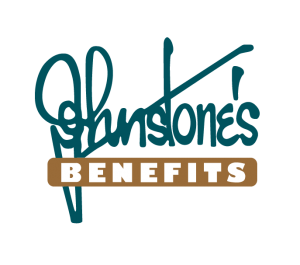The Journal
Solid Group Plans Made Simple
Health and Wellness Spending Accounts
Our October 2022 Johnstone’s Journal focused on Mental Wellness – one of the dimensions of “wellness” – mental, physical, social, financial, spiritual, environmental, and vocational. We looked at mental health initiatives that are common in group insurance plans, including internet-based Cognitive Based Therapy (iCBT) often part of an Employee & Family Assistance Plan (EFAP).
Another trend of including employee “wellness” initiatives as part of a group insurance plan, is setting up personal accounts for employees that support good health – Health Spending Accounts (HSAs) and Wellness Spending Accounts (WSAs).
Both HSAs and WSAs give employees the freedom to choose how and where to spend money allocated to their account. These accounts provide employers with a unique way to attract, retain and reward their employees. If the employer has specific business objectives, they can design these accounts to align to these objectives. For example, to improve productivity and reduce employee absenteeism, the employer could choose to cover benefits that promote better workplace health. If the goal is to attract and/or retain talent, the plan could be designed to reflect the employees’ unique needs, covering things such as daycare and eldercare, smoking cessation products, etc.
Health Spending Accounts
Health Spending Accounts (HSAs) are tax-effective set up for a specific amount, paid by the employer. HSAs cover health and/or dental expenses on a tax-free basis for employees residing in Canada, and can be used on a standalone basis, or as a top-up for existing extended health and dental plans. HSAs must conform to private health service plan rules as set out in Canada Revenue Agency (CRA)’s Income Tax Act.
Incorporated business, including shareholder employees and all other corporate employees, are eligible to participate in an HSA. However, an HSA cannot be solely for shareholders unless the shareholders are also employees earning a T4 income. In the case of unincorporated businesses or sole proprietors, the owner and their employees are eligible to participate in an HSA if there is at least one arm’s-length employee.
Employees can choose how to spend money allocated to their HSA to cover eligible expenses that include:
- Prescription drugs
- Registered health practitioners
- Hospital, care and facilities, including nursing home care
- Medical devices, equipment
- Medical expenses, including prescription sunglasses, laser eye surgery, radiology, rehabilitative therapy
- Dental care (not cosmetic)
Wellness Spending Accounts
A Wellness Spending Account (WSA) is a personalized wellness health program which provides employees with a taxable allowance to spend on wellness-related activities and products. The purpose of the plan is to promote employee wellness while limiting expenditures for the employer through a pre-determined allowance. This puts cost control in the hands of employers and flexibility of spending with employees. Wellness Spending Accounts (WSAs) are also known as Lifestyle Spending Accounts (LSAs) or Personal Spending Accounts (PSAs). Unlike HSAs, these accounts are taxable (part of annual taxable income on T4), but unused dollars in a WSA do not add to an employee’s taxable income. Therefore, eligible expenses are not subject to CRA guidelines, but often include:
- Gym or club memberships
- Nutritionists and vitamins
- Prescription or non-prescription sunglasses
- Personal training
- Teeth whitening
- Smoking cessation programs
- Over-the-counter medications
- Dermatology or cosmetic treatments
- Medical marijuana
Employment Insurance (EI) Sickness Benefits extending from 15 to 26 weeks
As part of Budget 2022, the federal government has confirmed they will extend EI sickness benefits from 15 to 26 weeks before the end of 2022. This change is designed to reflect the changing nature of work in Canada, having identified some gaps in the program highlighted during the COVID-19 pandemic.
Currently, EI sickness benefits can provide you with up to 15 weeks of financial assistance if you can’t work for medical reasons. You could receive 55% of your earnings up to a maximum of $638 a week.
Employers with a separate or integrated EI/STD plan may wish to align with the new 26-week benefit period.
Your Johnstone’s Benefits Client Account Manager will be in contact to discuss adjusting your STD benefit period, and/or LTD elimination period to align with the new EI sickness benefit period.
Changes to the Premium Reduction Program (PRP)
The PRP gives employers the advantage of paying lower EI premium rates when they have registered for the PRP, provide their employees with STD benefits and meet certain requirements. It is expected that the federal reforms to the EI sickness benefit will also affect the PRP sometime in 2023.
